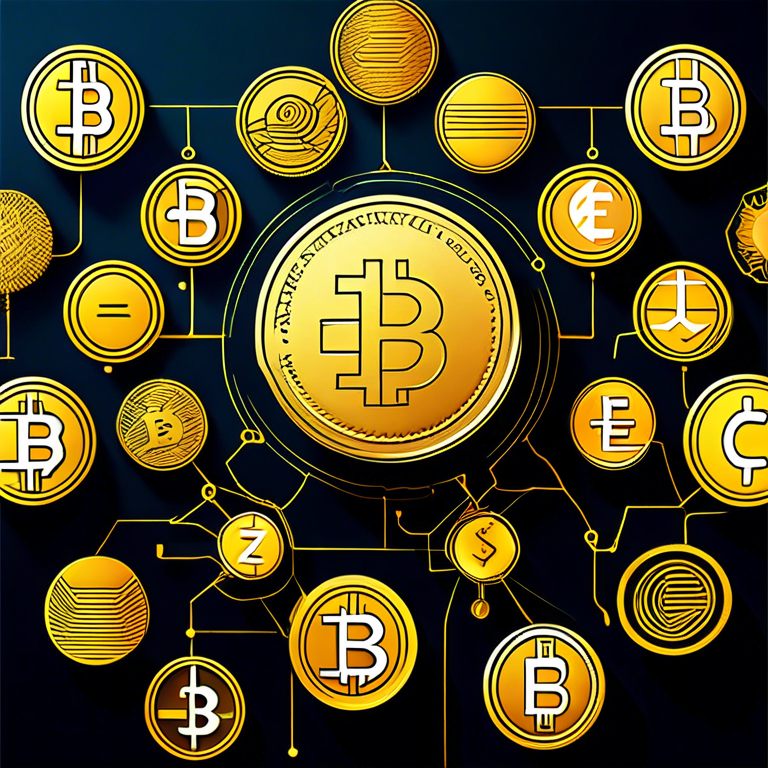This article explores the various cryptocurrency products that have emerged in the digital finance landscape. Understanding these offerings is crucial for anyone looking to engage with or invest in the cryptocurrency megabit. We’ll delve into different categories of products, their uses, and their impact on personal finance and global economic systems.

Overview of Cryptocurrency ProductsExchange
Cryptocurrency products encompass a wide array of solutions designed to facilitate the use and management of digital currencies. These offerings can range from wallets and exchanges to earning opportunities through staking and decentralized finance (DeFi) solutions. The ever-evolving landscape creates a diverse megabitplace that caters to varying user needs—from casual users and investors to institutional participants. It’s essential to grasp the types of products available and how they can be utilized effectively in today’s economy.
Types of Cryptocurrency Wallets
One of the core elements of the cryptocurrency ecosystem is the wallet, which acts as a digital safe for storing your cryptocurrencies securely. There are several types of wallets, each with its distinct advantages:
Hot wallets often come in the form of mobile applications, web wallets, or desktop software. They provide easy access to your digital assets for trading or purchasing goods and services. However, as they are continuously connected to the Internet, they are susceptible to hacking and phishing attacks. Users need to implement strong security practices such as enabling two-factor authentication to mitigate risks associated with hot wallets.
Cold wallets can be hardware devices or even paper wallets. Since they are not connected to the Internet, cold wallets are generally considered much safer for storing large amounts of cryptocurrencies. Individuals looking to invest for the long haul and reduce exposure to online risks should consider using cold wallets for their holdings. While access is less convenient than hot wallets, the trade-off in security can be worth it for many investors.
Exchanges and Trading Platforms
Another critical category of cryptocurrency products is exchanges. These platforms allow users to buy, sell, and trade various cryptocurrencies against different fiat currencies or other digital assets:
Centralized exchanges act as intermediaries between buyers and sellers, providing liquidity and facilitating smooth transactions. Examples include Binance, Coinbase, and Kraken. They typically offer advanced trading features like margin trading and futures contracts, making them attractive for both novice and experienced traders. However, users must trust the platform to safeguard their assets, along with acknowledging the risks associated with platform vulnerabilities and compliance regulations.
Decentralized exchanges, such as Uniswap and SushiSwap, have gained popularity for their privacy and autonomy. Since users retain control of their private keys and funds, the only information shared is related to the transaction. By leveraging smart contracts, DEX enables direct trades without intermediaries, significantly enhancing user control and security. However, DEX often comes with a steeper learning curve and some trade-offs, such as lower liquidity compared to centralized alternatives.
The Growth of Decentralized Finance (DeFi)
Another significant area of innovation in cryptocurrency products is decentralized finance (DeFi). DeFi platforms aim to replicate traditional financial services, such as lending, borrowing, and earning interest on deposits, in a decentralized manner:
Platforms like Aave and Compound are designed to leverage the power of blockchain technology to provide seamless peer-to-peer lending. Users can earn passive income on their idle cryptocurrency holdings, and the lending process eliminates the need for credit checks, allowing users from unbanked regions to access financial products. However, participants should be aware of the risks inherent in smart contracts, including potential vulnerabilities and flaws in the code.
Yield farming has become a trending topic, as investors strive to earn rewards by providing liquidity to DeFi pools. By depositing funds into liquidity pools, users can earn tokens as additional rewards. Yet, while the potential for high yields exists, investors should approach this strategy with caution due to fluctuating returns and the risks of impermanent loss.
In summary, the spectrum of cryptocurrency products today is vast and continuously evolving, offering a range of options for users to engage with digital currencies. From securing their assets with wallets to leveraging trading platforms and participating in DeFi, the ability to navigate these products effectively is essential for anyone looking to capitalize on the opportunities presented by cryptocurrencies. Understanding these products can significantly bolster a user’s competence in managing their digital assets.